If you enjoy fermented foods then this spicy red cabbage sauerkraut recipe is easy to make and goes really well with most savoury dishes, especially during summer.
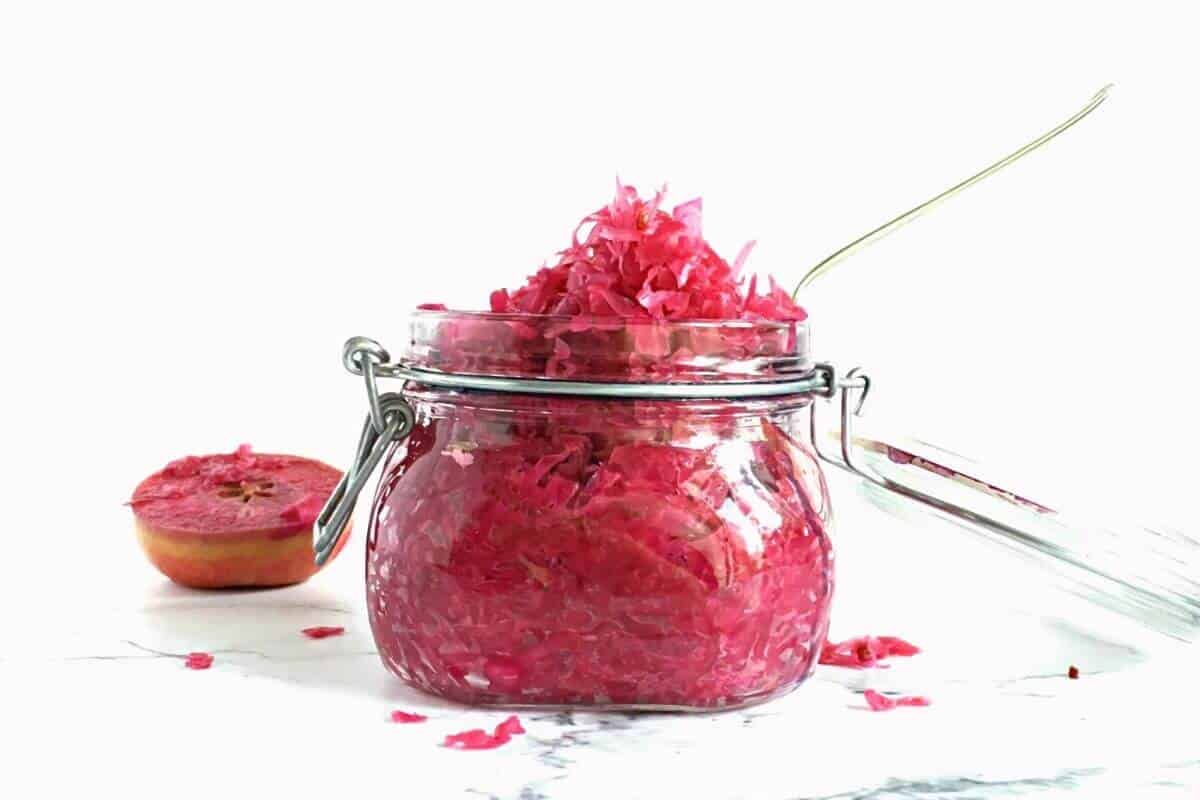
Jump to:
Why A Spicy Red Cabbage Sauerkraut?
I first heard about fermentation about ten years ago at an event where 2 lovely parents got up and demonstrated making raw sauerkraut with just 2 ingredients, cabbage and salt.
The event left a huge impression on me and straight away I was really curious about fermented foods and gut health.
Then the first time I tried sauerkraut it blew my mind how amazing it tasted.
That slightly salty, juicy sourness, the crunch, the tartness. Oh My!
I instantly loved it and went out to buy my first fermented foods book which was Wild Fermentation by Sandor Katz. I remember reading it from cover to cover, it's one of my favourite books.
So anyway, after making a basic sauerkraut at home for a while I decided to spice things up a bit and created this recipe for a summer garden party.
What else is in this recipe?
Ginger: also known as ginger root, ginger brings a wonderful warmth and tangy flavour to any recipe and goes well in savoury recipes as well as sweets and desserts. Please use fresh raw ginger in this recipe, for its vibrancy and if it’s not organic you’ll need to peel the skin off first.
Tip: Instead of using a knife it can be easier to use the side of a spoon to peel the skin from fresh ginger root.
Red Chilli: chilli of course adds heat and spice. Chilli’s are technically a fruit and part of the nightshade family, related to bell peppers and tomatoes. In this recipe I’m using fresh red chilli pepper to give the sauerkraut a nice kick of heat. You only need a little because the flavour’s strong and goes a long way. But feel free to add as much as you like adjusting it for your own personal taste.
Apple: an apple will add some light sweetness to the natural sourness of the fermented cabbage. I use it to help balance out the flavours or saltiness, sourness and heat. The apple will ferment faster than the cabbage does and help to give the sauerkraut a lovey fizz.
What is raw sauerkraut?
Sauerkraut is probably the most well known lacto-fermented vegetable dish.
Fermentation is traditionally a way of preserving foods at times of the year where some foods are in shorter supply. Fermented foods have also traditionally been associated with having health giving properties.
Raw sauerkraut is made using raw cabbage and salt which creates a natural brine as the salt draws out water from the cabbage.
The resulting brine needs to completely cover the fruit and vegetables to avoid them spoiling.
I love to add a tablespoon of this to my salads, bowls and roll ups mostly but really you can add it to almost any savoury dish.
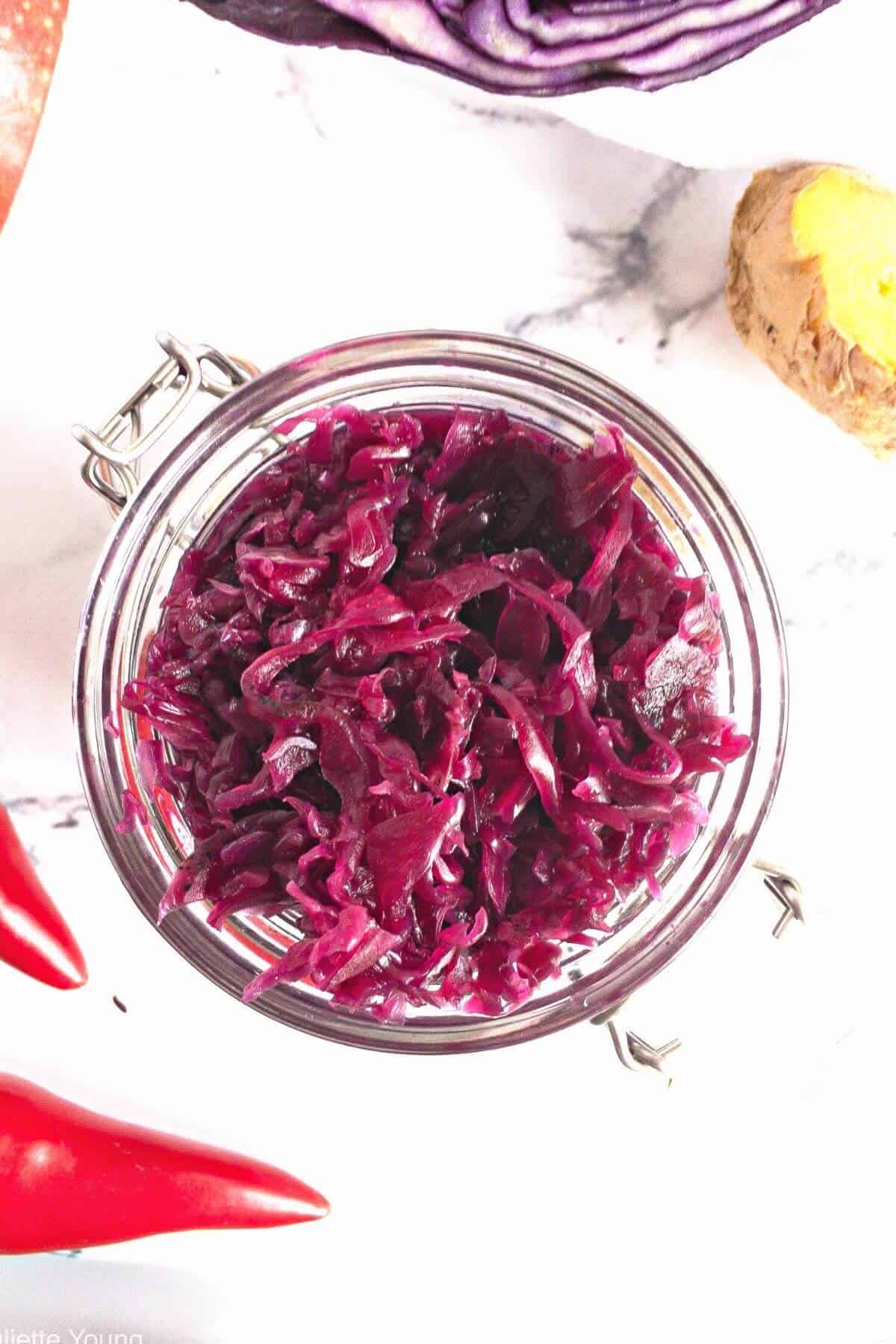
Should I wash the cabbage before fermenting it?
If you're making raw sauerkraut you should definitely remove the outer leaves first but you don’t actually need to washing the cabbage leave you’ll be using. The successful fermentation process relies partly on the microbes which lie on the leaves of the cabbage in order to work.
What are pickled foods?
Pickling foods is the process of adding foods to vinegar to preserve which is not the same as fermenting, even though vinegar itself is fermented.
Which salt should I use?
I like to use a good quality unrefined sea salt or Himalayan salt which naturally still contains some minerals. Look for a salt that is unrefined and has no additives as this may prevent your fermentation or just make it taste nasty. Please check the food label before using.
How long should I ferment cabbage to make a good sauerkraut?
You would typically let a sauerkraut sit and ferment for 3 days up to 4 months max, depending on the method you use. The longer you leave it, the stronger the taste will be.
I find my sauerkraut is ready in 2 weeks max. Do test yours every couple of days until you get the taste you like best. I refrigerate my sauerkraut when I feel it’s ready and this stops it fermenting further and helps to keep it fresh.
If the atmosphere in your kitchen is cold or on the cool side it will take longer for the fermentation process to get started and if it’s warmer the ferment will be ready sooner.
Serving ideas.
Gorgeous served with:
- salads
- buddha bowls
- tacos
- wraps
- nori rolls
- sushi
I LOVE sauerkraut and I hope you do too 🙂
If you like this recipe check out my post for this basic raw sauerkraut.
or use it as an accompaniment with:
- Raw cauliflower "fried" rice
- Cauliflower couscous with orange fennel salad
- Asparagus and pea shoot salad
- Vegan Waldorf salad
📖 Recipe
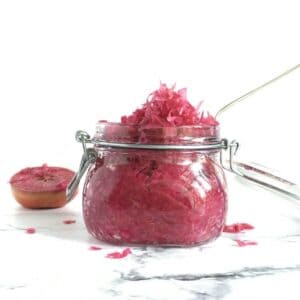
Spicy red cabbage sauerkraut
Equipment
- a chopping board.
- a sharp knife or mandolin.
- a grater.
- a large bowl.
- a small plate.
- a medium lidded mason jar for storing.
Ingredients
- 1 medium red cabbage.
- 1 apple.
- an inch of chopped fresh ginger.
- ¼ - ½ red chilli, (to taste.)
- 1 tablespoon himalayan pink salt.
Instructions
- Begin by slicing the cabbage very thin with a sharp knife or mandolin, being extra careful if you're using the mandolin.
- Grate half the apple leaving the remaining half. Finely chop the chilli and grate the ginger. Add these to the large bowl of sliced cabbage and mix thoroughly.
- Sprinkle the salt all over the red cabbage mixture and stir so that it's fully incorporated then leave for 20 minutes. This gives the salt time to work on your ingredients and begin drawing out water from the vegetables which will start to soften.
- Go back to your bowl and with clean hands start to work it all together. You need to grab handfuls and squeeze the red cabbage mix tightly over and over again until it becomes really wet and a big puddle of gorgeous pink liquid builds up at the bottom of the bowl. This mini work-out should take about 10 minutes.
- You want it to produce so much water that, once it's packed into the jar, the cabbage is completely submerged. This is REALLY important because it will keep the sauerkraut fresh while it's in the anaerobic environment and prevent it from going mouldy.
- Pack the mixture into your jar and press it down to get it all in.
- Take the apple half and stuff it on top of the sauerkraut to make sure it’s completely covered in the liquid. There needs to be a gap between the completely submerged sauerkraut and the lid of 1-2 inches.
- Put the jar of sauerkraut on a plate and burp it (open the lid and let the air out) every day to let the build up of gas out of the jar so it doesn’t explode! Allow your sauerkraut to ferment for a minimum of 3 days and up to 2 weeks before popping it in the fridge to hold the flavour where you like it.
Notes
Hey did you enjoy this post? If so it would mean the world to me if you would please Pin this to your Pinterest boards or even share the LOVE on social media so your friends can enjoy it too.
I’m off to make some tea!
Juliette
XOXO

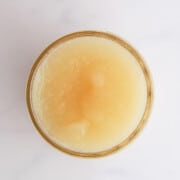





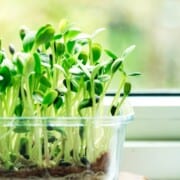
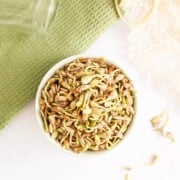
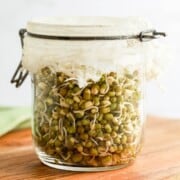
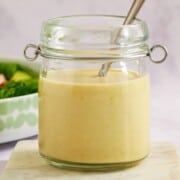
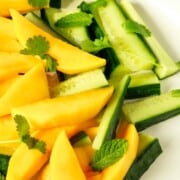
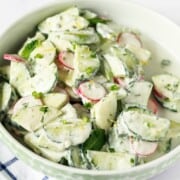
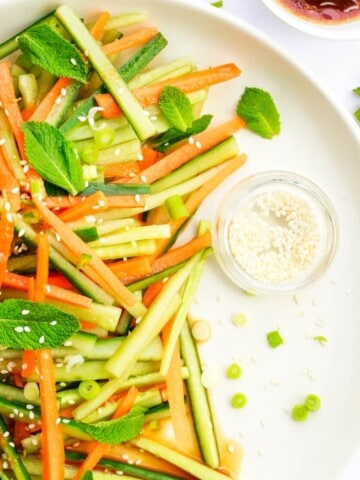
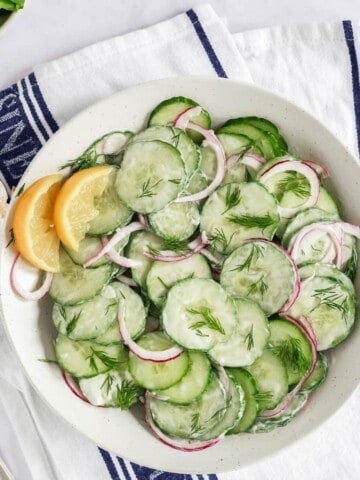
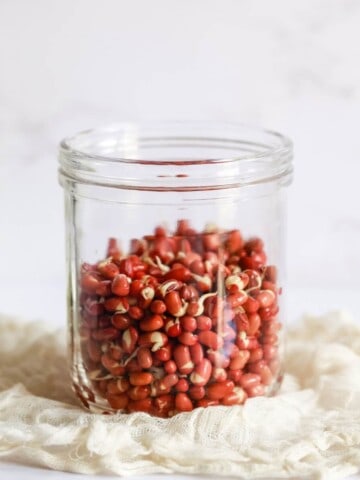
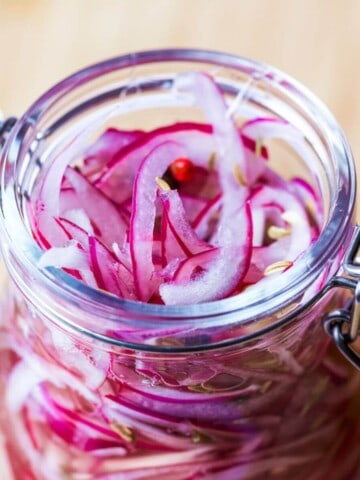
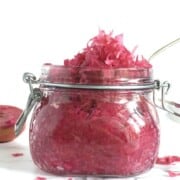
Comments
No Comments